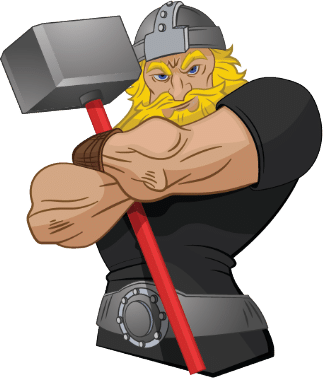What are Orangeburg Pipes?
Depending on your home’s age, there’s a chance your sewer line is made from a material called Orangeburg which was prevalent between 1945 and 1972.
This material doesn’t corrode because of its tar paper composition. However, it’s also extremely light and brittle, leading to premature deterioration. Homeowners should know that Orangeburg pipe absorbs moisture at a higher rate than clay or cast iron sewer pipes, too, which can lead to distortion or layers of the pipe bubbling and causing blockages.
Although manufacturers claimed Orangeburg had a 50-year lifespan, it starts breaking down at about 30 years. And since homebuilders stopped using the material about 50 years ago, you’re well overdue a new sewer line if you have this under your home.
If you believe you have Orangeburg sewer pipes, here’s what you should do.
How to Tell If Your Orangeburg Pipes Need Attention
Orangeburg was a popular building material until 1972 because it was easy to make. In short, it’s a bituminized fiber pipe made from wood pulp, a water-resistant adhesive, and hot pitch that gets its name because it was mass-produced in Orangeburg, New York.
So, how do you tell if your Orangeburg pipe is due for replacement?
The most obvious sign of a pipe problem is an indent in your front yard along your main sewer line’s path. You’ll clearly see an issue in your yard when this occurs, and you’ll want a plumbing technician to address the problem immediately.
You should also pay attention to what your neighbors are doing. If other houses in your neighborhood are running into issues with their Orangeburg pipes and replacing them, it’s probably only a matter of time until you experience similar problems.
Hunt’s Services can assist with a camera sewer inspection that allows us to see the condition of your Orangeburg pipes and make recommendations based on what we discover.
Why You Should Consider Replacing Your Orangeburg Pipes Soon
Naturally, minimizing your costs as a homeowner is a priority, but it’s essential to look at the big picture. Orangeburg pipes typically last for about 30 years, and since these products have been in circulation for 50 years, yours probably are getting close to the end of the line.
As your pipes approach the end of their lifespan, you might notice symptoms like:
- Slow drains
- Toilet back-ups
- Mold
- Indentations in your yard
- Sinkholes in your foundation
- Sewer odors inside your house
Proactively replacing your sewer line when you notice these symptoms, or at least calling the pros at Hunt’s Services to inspect your system, could save you significant cash in the long run.
How Your Trenchless Sewer Repair Will Work
As you research sewer line replacement options in Western Washington, you should know that traditional dig-and-replace methods are somewhat outdated. While they might be necessary for some scenarios, reinforcing or replacing your sewer line using trenchless technology is often possible.
Trenchless pipe repair can restore cracks and root damage to your pipes without digging up your yard. Technicians can typically complete these repairs in a few hours, and they are less expensive.
Perhaps the most efficient form of trenchless sewer repair is cured-in-place pipe lining. The gist is that the technician will access your sewer line through an existing access point, inserting a liner coated with epoxy into the pipe. The inside of the pipe is coated with resin, which hardens and reinforces your Orangeburg pipes.
It’s possible to get an extra 50 years from your Orangeburg pipes if you complete this repair early enough, although you should know that sometimes the damage is too extensive, and you’ll have to go in a different direction.
Your other trenchless sewer repair option is pipe busting, which is reserved for situations where there’s more extensive damage to the plumbing system.
In this scenario, your technician collapses the existing Orangeburg pipe into the soil without needing to dig it out using steel bursting heads. The new line is also attached to these heads, allowing it to replace the old pipe simultaneously.
The entire job is completed through a small entry point in your yard, so no trench is necessary, and there’s minimal displacement to your landscaping.
While pipe lining is the most economical option, it’s nice to know there’s another trenchless option for situations where your Orangeburg pipes are beyond repair.
Getting the Assistance You Need
If you have Orangeburg pipes in your home, you should know it’s only a matter of time before you experience issues. This material is prone to problems as it ages, and you’ll want to bring in a technician to complete a camera sewer inspection as soon as possible to check on its condition.
From there, your technician will develop a repair plan that works for you.
Contact Hunt’s Services at 253-533-7500 to learn more about our trenchless sewer repair options for Orangeburg pipes in Thurston, Pierce and King Counties.



